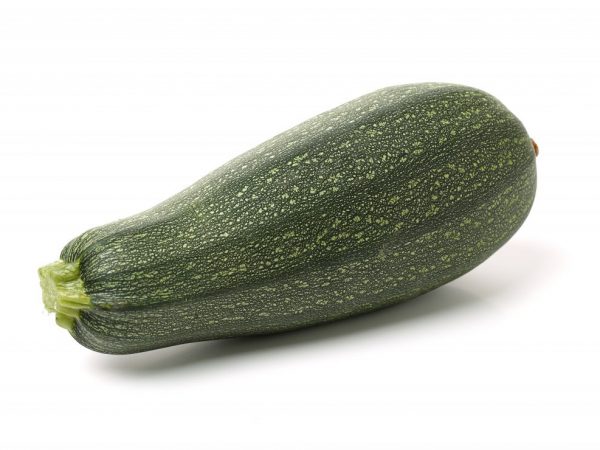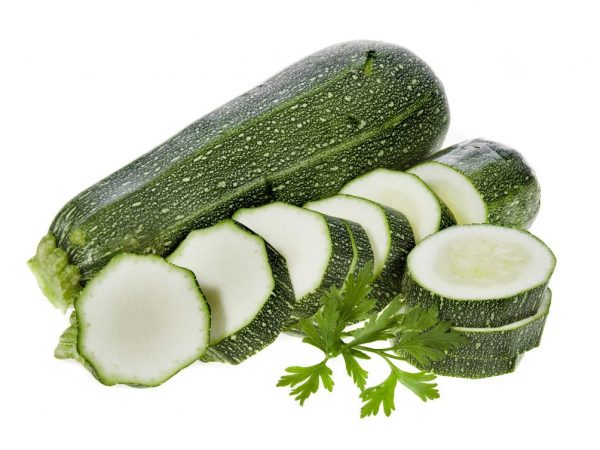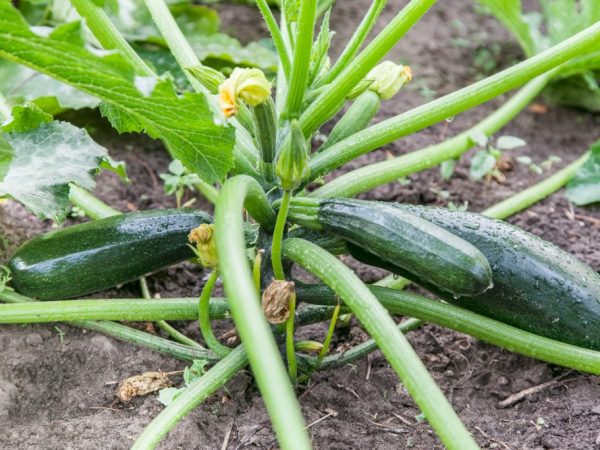Growing zucchini Skvorushka
Zucchini Skvorushka is included in the list of vegetables that are considered a diet food, because contains a large number of nutrients necessary for the full development of the body. The total volume of microelements of the culture is famous for its low calorie content and large vitamin reserves.

Growing zucchini Skvorushka
Description of the variety
The zucchini variety has become a real discovery for gardeners, because it is quite unpretentious to weather conditions and agricultural equipment. These vegetables belong to the annual plants that are part of the pumpkin family.
Skvorushka is a medium early variety. It is one of the varieties of zucchini. Zucchini is translated from Italian as a small pumpkin. This vegetable differs in external parameters, mainly in color: dark green or yellowish.
According to the description of the squash Skvorushka, the fruits are cylindrical in shape with some bulges on the lateral surface. They are dark green in color with small white spots. The rind is quite smooth and has a fine structure.
The maximum lengths of the zucchini of this variety, which were recorded by gardeners, are about 25 cm. During the ripening period, fruits weighing from 0.5 to 1.3 kg can be harvested. The pulp of the vegetable has a white tint and is characterized by high juiciness, due to which it has excellent taste properties.
Yield
After you have noticed that Skvorushka zucchini are beginning to bloom, you need to count 20 days, and then you can start the first harvest. During this time, the fruits will not have time to grow to the maximum parameters, but it is precisely these sizes of the zucchini that are suitable for cooking.
You must not allow Skvorushka to overripe, because a vegetable can change its taste, and in some cases even become unusable.
Determining the maturity of a fetus is easy. To do this, you need to pay attention to the zucchini peel: if it is hard, then the vegetable is ripe. With a dull sound when tapping on it, you can also collect zucchini from the garden. A plucked vegetable can be stored for 4-5 months from the date of harvest.
This variety is considered a leader among early ripening varieties (up to 50 days), and is also characterized by high yields. With the right agricultural techniques, you can collect 5-7 kg of zucchini from 1 bush.
Application
Zucchini is a dietary product and contains a huge amount of mineral components that fill the body with all the necessary substances. Also, this vegetable is easily digested and normalizes metabolism. Nutritionists highlight a number of advantages of using Skvorushka zucchini in any form:
- it should be added to dishes for those people who suffer from diseases of the cardiovascular system and obesity;
- zucchini are considered preventive vegetables, which are consumed in case of problems associated with disruption of the gastrointestinal tract. They facilitate the assimilation of heavier foods that are consumed with them;
- the fruits in some cases can be used as an anthelmintic, because they contain a large amount of oil;
- the vegetable is useful for the elderly, because is considered the main obstacle to the accumulation of cholesterol in human blood.

The vegetable is versatile in preparation
A large number of dishes can be prepared from culture using various technological processes: cooking, frying, stewing, stuffing, preservation. It can be used to create sauces, cream soups, and more.
Advantages and disadvantages
Zucchini Skvorushka has a number of advantages:
- high yield rate;
- the fruits ripen almost simultaneously;
- short ripening period (from 40 to 50 days);
- excellent taste;
- vegetables are suitable for transportation;
- relative resistance to adverse weather conditions.
Skvorushka's shortcomings are almost impossible to identify. The only inconvenience to growing may be that the crop needs sunlight and warmth. In order to obtain a rich harvest, it is recommended to plant the bushes in a place fenced off at least on both sides from strong winds that can break their lashes.
Growing
For growing squash seedlings or sowing seeds, a soil with a neutral acidity level is recommended. If the soils in your area are acidic, you must first add limestone to them in order to reduce this indicator.
Before planting, additional methods of soil preparation can be the introduction of organic fertilizers. It is recommended to plant a crop in the soil where potatoes, tomatoes or onions were previously grown.
Zucchini of the Skvorushka variety is grown in two ways:
- seedlings, which are prepared 2 months before immersion in open ground;
- with the help of seeds - during the period when the earth warms up well and there is a low probability that frosts will appear (late spring - early summer). Several seeds are sown in a pre-prepared well to increase the possibility of germination of the culture. If all the seedlings sprout, then only the strongest should be left.
When preparing planting holes, a distance of about 60 cm between them should be maintained.
Care
If you follow all the rules of agricultural technology at the end of the season, you can harvest an excellent harvest. Attention should be paid to loosening the soil. Make sure that the bed is well-letting in light and water. Loosening is necessary depending on the type of soil: the harder the soil, the more often you need to use this procedure.

The variety will delight you with a good harvest.
Zucchini bushes should be watered approximately once every 10 days. This volume of water will be enough for fruit ripening. Water for irrigation should be warm to prevent the formation of rot. The starling does not tolerate high humidity, so you can stop watering 10 days before harvesting.
Periodically, it is recommended to feed the bushes: during flowering and fruit growth. In this case, a mullein or other special preparations would be the ideal fertilizer.
During the flowering period of zucchini, the petals of the inflorescences should be periodically pushed apart so that pollinating insects can easily reach the stamens.
Testimonials
Gardeners note the rapid maturation of the crop, the compactness of the bushes and high yield rates.
The fruits of the Skvorushka zucchini variety lend themselves well to processing and are suitable for preparing blanks for the winter.

